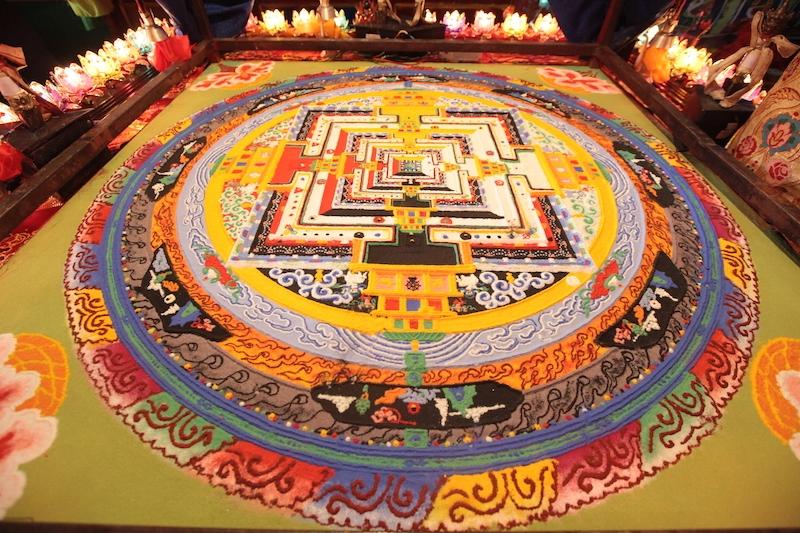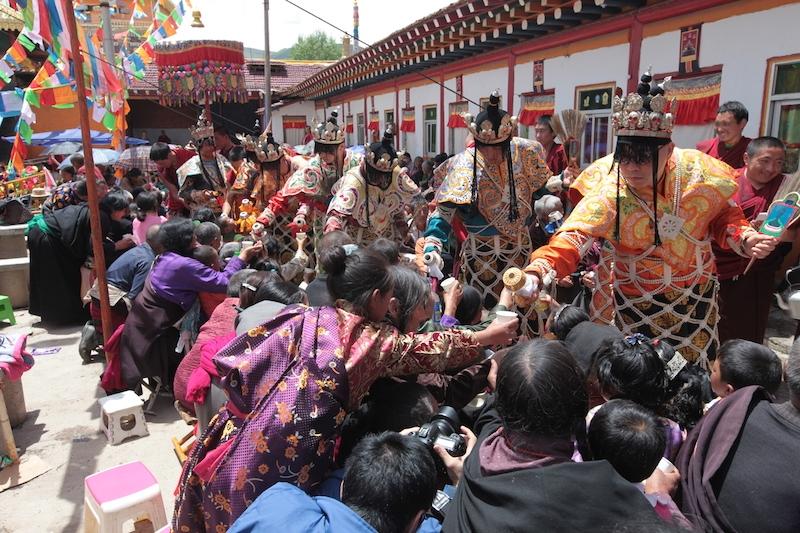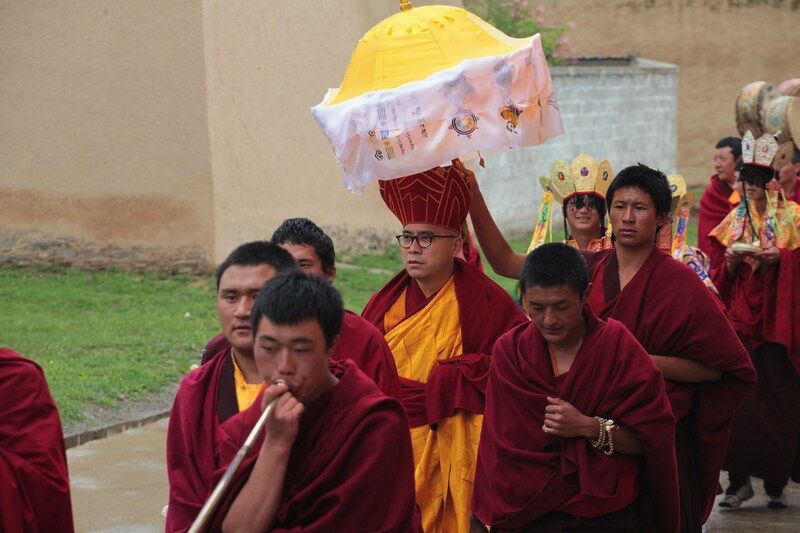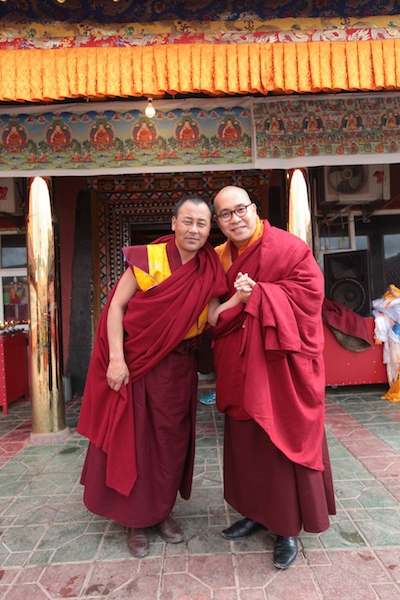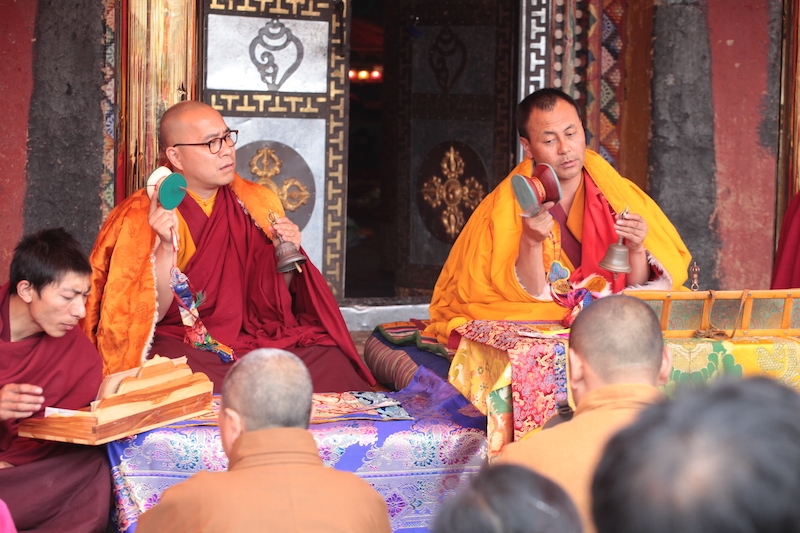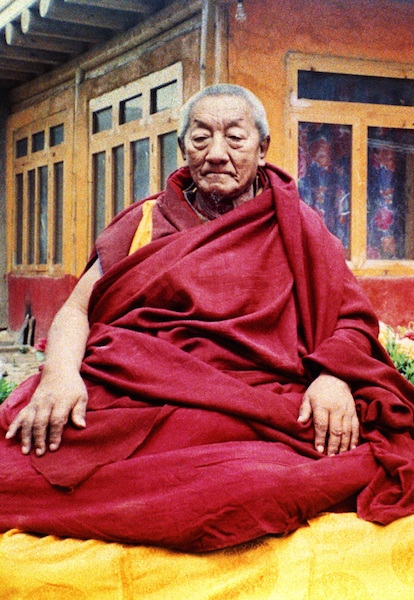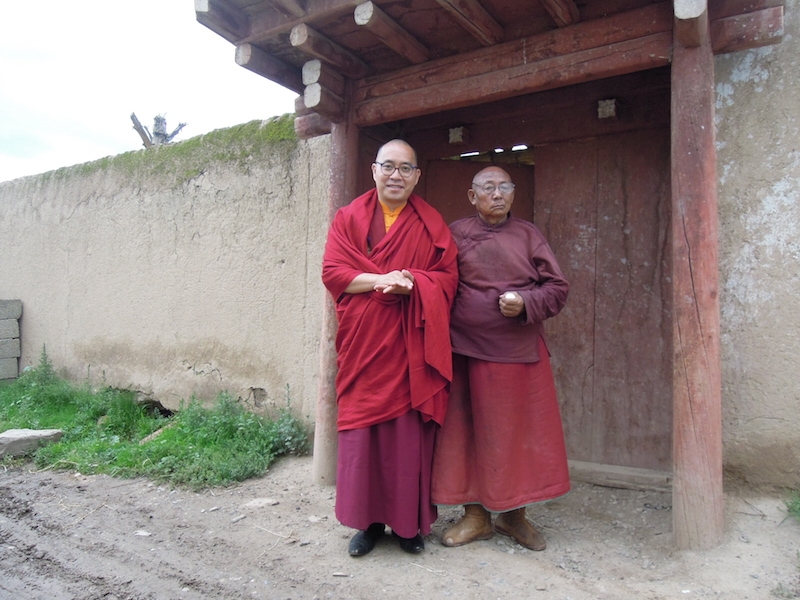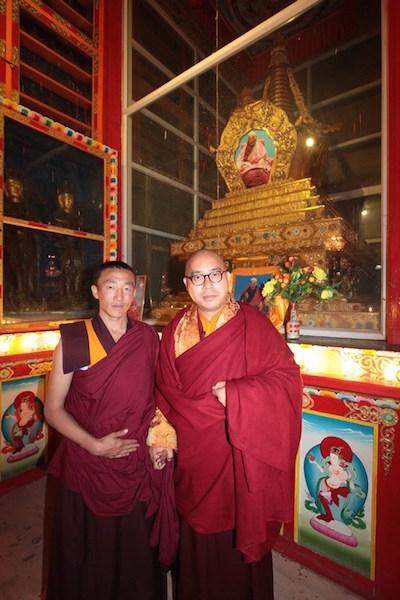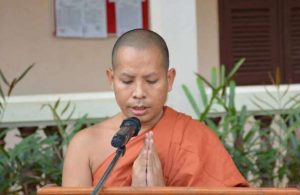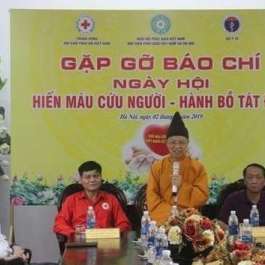Undertaking a pilgrimage is much like gazing into a mirror to get a clearer view of oneself . . .
Last year, Hong Kong’s Buddhist community experienced a mix of gains and losses. Alongside the passing of Venerable Kok Kwong, former president of the Hong Kong Buddhist Association, the Grand Hall of Ten Thousand Buddhas at Po Lin Monastery opened its doors and a 38-meter Medicine Buddha thangka, the largest of its kind, was unveiled in the heart of the city during the Third Hong Kong Buddha Sunning Festival.
The festival was founded by Ngawang Kunga Tenzin Gyatso Rinpoche, a Tsangwa Tulku of the Jonang school of Tibetan Buddhism. Tsangwa literally means “someone from Ü-Tsang” (one of the three historical provinces of Tibet), and the Tsangwa Tulkus are a lineage of reincarnated lamas of the Jonangpa, which remains relatively unknown even to practitioners of Tibetan Buddhism. Having long felt the urge to learn more about this school, from 30 May–9 June I joined a pilgrimage to Dzamthang in China’s Sichuan Province. The pilgrimage included a seven-day Kalachakra initiation ceremony at Swe Monastery, the second-largest monastery of the school.
What is Kalachakra?
The Kalachakra Tantra is a Buddhist tantra of the Highest Yoga Tantra Class, which is widely considered to be the most advanced form of Vajrayana practice. An immense source of strength that serves to balance the Four Elements constituting all existence (earth, water, fire, and air), the Kalachakra Tantra is thought to be instrumental in bringing peace to the world.
According to tradition, the historical Buddha, Shakyamuni, first taught the Kalachakra Tantra at Vulture Peak in India a year after his enlightenment. King Suchandra, from the mystic land of Shambhala, wrote a long exposition after hearing the tantra and propagated the Kalachakra Tantra across the country. Thereafter, the Kalachakra tradition was maintained by the king’s successors in Shambhala for generations. In the 10th century, the tantra was reintroduced into India by an Indian master named Chilupa, and spread into Tibet in the following century. The tantra evolved into two different schools—the Dro school, upheld by the Jonangpa and emphasizing the practice of the Six-fold Vajrayoga (Six Yogas) in seclusion, and the Ra school perpetuated by the Gelugpa lineage, which is more theory-oriented.
In modern times, the Kalachakra initiation has been conferred by luminaries of the various schools of Tibetan Buddhism, such as the Dalai Lama, Dilgo Khyentse Rinpoche, Penor Rinpoche, and Kalu Rinpoche, as well as the Jonang masters Ngawang Yontan Zangpo Rinpoche and Ngawang Jigme Dorje Rinpoche, the previous and present Jonang throne-holders, and Kunga Sherab Saljay Rinpoche.
Traditionally, the seven-day Kalachakra initiation can only be given by qualified Vajra Masters. The ceremony held at Swe Monastery last month was co-hosted by Thubten Chokgyur (特不丹秋吉俄熱) Rinpoche, the monastery’s fifth Vajra Master, and Ngawang Kunga Tenzin Gyatso Rinpoche. The collaboration was the result of a shared bond with their common guru, the late Lama Tokiwa (吐基華), the fourth Vajra Master of the same monastery.
Jonangpa guardians
In the 17th century, for political reasons the Jonangpa fled from Ü-Tsang to take refuge in Dzamthang and Ngawa in Sichuan and Golok in Qinghai. While the Jonang Kalachakra tradition survived the political turmoil within Tibet at that time, it almost met its demise during China’s Cultural Revolution (1966–76). Lama Tokiwa, together with Ngawang Yontan Zangpo Rinpoche, risked their lives to save this precious legacy from extinction.
“Reviving the Jonang tradition is extremely difficult, particularly during the degenerated time,” says Ngawang Kunga Tenzin Gyatso Rinpoche. “Keeping the Jonang tradition alive and thriving has always been my uppermost concern, and this is the very task the two gurus entrusted to me.”
A living legacy
Little has been written about the Jonangpa since the 17th century, which explains its relative obscurity compared with the other schools of Tibetan Buddhism. During my pilgrimage, I witnessed several events that helped me understand how this lesser-known tradition has continued to this day—the seven-day Kalachakra initiation performed solemnly for locals and pilgrims; the auspicious signs that appeared during the empowerment; the degree of respect paid to Ngawang Kunga Tenzin Gyatso Rinpoche by the Jonang order; the former abode of Lama Tokiwa, which bears witness to the painstaking austerity of a devoted master; and Lama Tokiwa’s remark that he and Ngawang Kunga Tenzin Gyatso Rinpoche are indeed “no different from each other,” as per the account of Lama Tokiwa’s attendant, Lama Kuntsong.
Visiting Tsinang Monastery in Sichuan also served to deepen my understanding of the Jonangpa’s riches. I had the privilege of greeting the abbot Lama Xiang Qiu Hua (向秋華), the reincarnation of Lama Ke Sang (克桑), who was one of the gurus of Lama Tokiwa, His Holiness Ngawang Yontan Zangpo, and H. H. Ngawang Jigme Dorje. I was also allowed to enter the meditation cave of Machig Labdrön, an 11th-century tantric Buddhist yogini who is known for her Chöd practice (Chöd meaning “slaying” all attachments to the self). It is a sacred hermitage where a great many Jonang masters have practiced in seclusion.
Beyond Jomonang to the outside world
As a Tsangwa Tulku born and bred in Hong Kong, Ngawang Kunga Tenzin Gyatso Rinpoche has made it his calling to bring the Jonang Kalachakra tradition from the remote Jomonang valley in Ü-Tsang, where Jonangpa first originated, to the outside world. During my pilgrimage, Rinpoche announced a plan to open the Contemporary Jonang (International) Kalachakra Dharma Centre in Hong Kong, an establishment he is co-founding with Lama Xiang Qiu Hua.
A series of events involving masters from multiple Jonang monasteries is planned to follow the opening of the center, such as the display of the world’s largest thangka of the Jonang school’s founder, Dolpopa (1292–1361), commissioned by Kunga Sherab Saljay Rinpoche, at the Hong Kong Buddha Sunning Festival. Rinpoche noted that Dolpopa, who shunned politics and worked for the Dharma his entire life, set a good example for Hong Kongers to follow.
Another major undertaking is the seven-day Kalachakra initiation by Vajra Masters across the lineage, planned for Hong Kong and later other countries, to counter the growing number of natural and man-made disasters in the world.
Mindful speech
This was the teaching given by Ngawang Kunga Tenzin Gyatso Rinpoche at the end of my pilgrimage: “Just as Venerable Mengcan (夢參老和尚) says, today it is common to see lay practitioners taking pride in how well they talk about the Dharma. What they do, though, has nothing to do with the Dharma. Their greed, anger, and ignorance are even preventing monastics from fulfilling their duties. Practitioners should always remember to speak mindfully.”
Direct experience is always better than a third-hand account. For those who would like to know more about the Jonangpa, Rinpoche suggests that they visit the planned Contemporary Jonang (International) Kalachakra Dharma Centre. Alternatively, they could participate in the Kalachakra pilgrimage that is being planned for next year.
Coming to terms with one’s true self
A pilgrimage is indeed like a mirror. Seeing the heartfelt gratitude of the Tibetans for the initiation and blessings they received was something of a rude awakening for me about how ungrateful I am, at least sometimes, for being fortunate enough to practice the Dharma in this life.
The Kalachakra initiation purifies and empowers the recipients gradually over the course of the seven days. It resembles the bodhisattva path, which peels off one’s ego layer by layer until the practitioner ultimately becomes completely selfless. Only with this broad vision can the Kalachakra initiation, the aim of which is to promote world peace, truly be of benefit to the practitioner and eventually, other beings.
See more
Third Buddha Sunning Festival with Mega-thangkas in Victoria Park, Hong Kong (Buddhistdoor)
